Design Is Desire: The Apex Interviews Frank Stephenson
Our guest this week is one of the world's most renowned and influential designers – Frank Stephenson. If you've ever longed for a modern McLaren, admired the rear wing on a Ford Escort RS Cosworth, or just found delight in a modern MINI Cooper or Fiat 500, you will probably know what it feels like to encounter his elegant work. He joined us this week to tell us a bit more about his inspirations and design philosophy, and to share a few insights from a tremendous career.
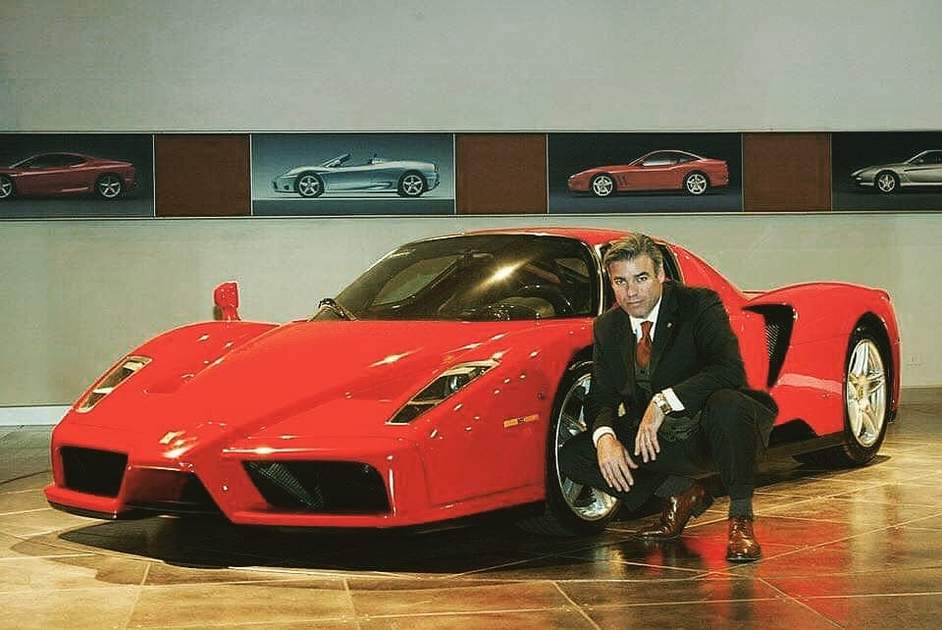
Hector Kociak interviews Frank Stephenson for The Apex by Custodian. Recorded and Produced by Jeremy Hindle. Transcribed by David Marcus. Edited by Hector Kociak & Charles Clegg.
Could you briefly tell us about how you got into cars and car design in the first place?
It's a strange one, because I grew up in Morocco, so that's not really car country as we know it. But I did grow up with a father who was very interested in anything mechanical, especially anything that went fast, so cars naturally came off the back of that. In the early ‘60s my father started a car dealership, which meant that my summers were spent there rather than playing in the playground. I spent a lot of my youth in that dealership, just being exposed to wonderful cars from all over the world. I also grew up with a very artistic mother. My father was a very technical, cool and calculated kind of guy, but my mother was on the opposite end of the spectrum. She loved the arts, so I think genetically, I was disposed from the get-go to be a sort of ‘artistic scientist’ or something!
I spent a lot of time as a kid drawing cars in the dealership. At some point the lever flips and you start wanting to draw cars that you imagine, rather than cars that are sitting there in front of you. In the world of car designers that typically happens at around 10 years old with most of us, for some strange reason. I started drawing cars that didn't exist without even an ounce of knowledge that they could pay you to do this as a profession. Weirdly enough, around the age of 22, I discovered the world of professional car design, or at least that there was a potential to turn your drawings into money. Naturally I had to go to university to study that - you couldn't just go straight into being a professional car designer - so I reluctantly left a professional motorcycle racing career behind and decided to design cars for a living.
At that point you're not really sure if you're going to get a job or not. Luckily I did four years of the ArtCenter College of Design in Pasadena, California, and if you survive that you are pretty much guaranteed to get a job in the industry! I was cherry picked halfway through university when Ford came along and offered to pay for the rest of my studies if I signed up with them on graduation. Obviously I couldn't turn that offer down, because it takes a huge weight off your shoulders, and so I went straight to Ford. That's how I got into car design!
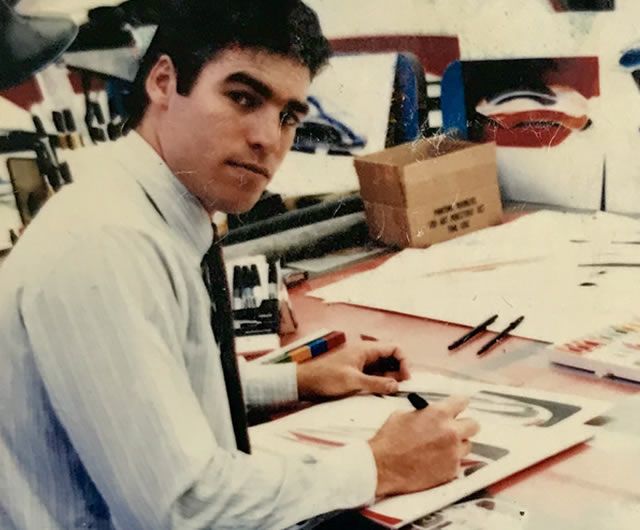
Speaking of which, you've designed everything from the modern MINI Cooper to extreme performance cars at Ferrari, Maserati, and McLaren (with the Fiat 500 along the way!). Do you design your vehicles with a specific kind of person in mind, thinking about the customer who is buying that car, or do you go with the shapes which feel right for the purpose?
It's kind of a triple action, because when you design a car you're not designing it for yourself. Of course you can be very arrogant, and the higher up you get in a company the more responsibility and power you can have over the design, speaking directly to the management and the board. However for the design phase of the car, I think a good lesson for younger designers is to remember that you’re designing the car for the company and not for yourself. The company is however paying you as a designer to interpret an idea through your own design - you're the professional here. So you have to be as individual as possible when you're communicating the answer to the marketing request to build a certain car for a certain segment of the market.
If you're a smart designer you won't go off like a bat out of hell designing the car. You do your research of what the market in that segment is like first, and who the competition is - who does it best, in other words, and then that's your target. Of course all designers want to do the next ‘big thing’, and you can't achieve that by just thinking like the status quo. The cars that have the greatest impact are the ones that are probably pushing the limits in design and giving the engineers headaches right from the start. But when you research the market, you do have to look at the customer in that segment and design the car that feels right for you in that market.
Making it right for that customer means obeying the design values of the company you're working with. It's very arrogant if you throw away years of design history and language of a great brand, just to do something that looks completely different, where you need the logo on it to identify what it is. That's the worst thing. Typically I always say that you should be able to identify the design of the car without any brand logos on it. The design should reflect the design language and history, but in an innovative way, because you're designing a car that's going to be released in five years. There's no way the public knows what they want in five years’ time, and we're not designing fashion or fast moving consumer products which are in and out of the market in one year. You perhaps have to think even three years ahead of that, because when that car comes out you still want it to look fresh for another three years at least. So in a way you're actually designing the car for a certain point in the market eight years in the future that will still suit the marketing strategy for the relevant segment.
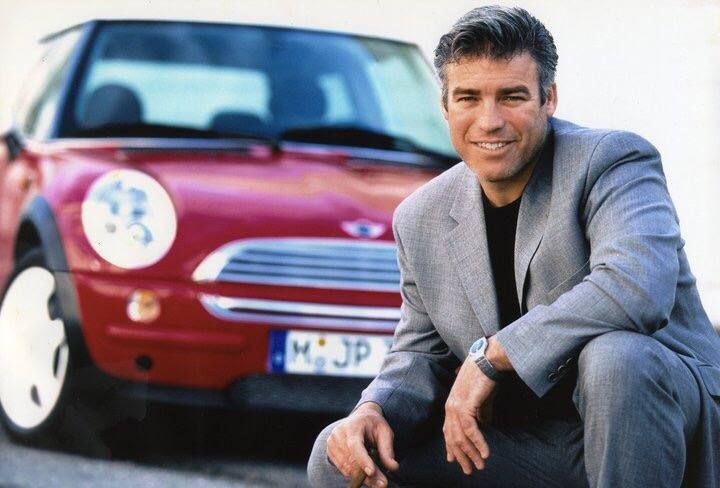
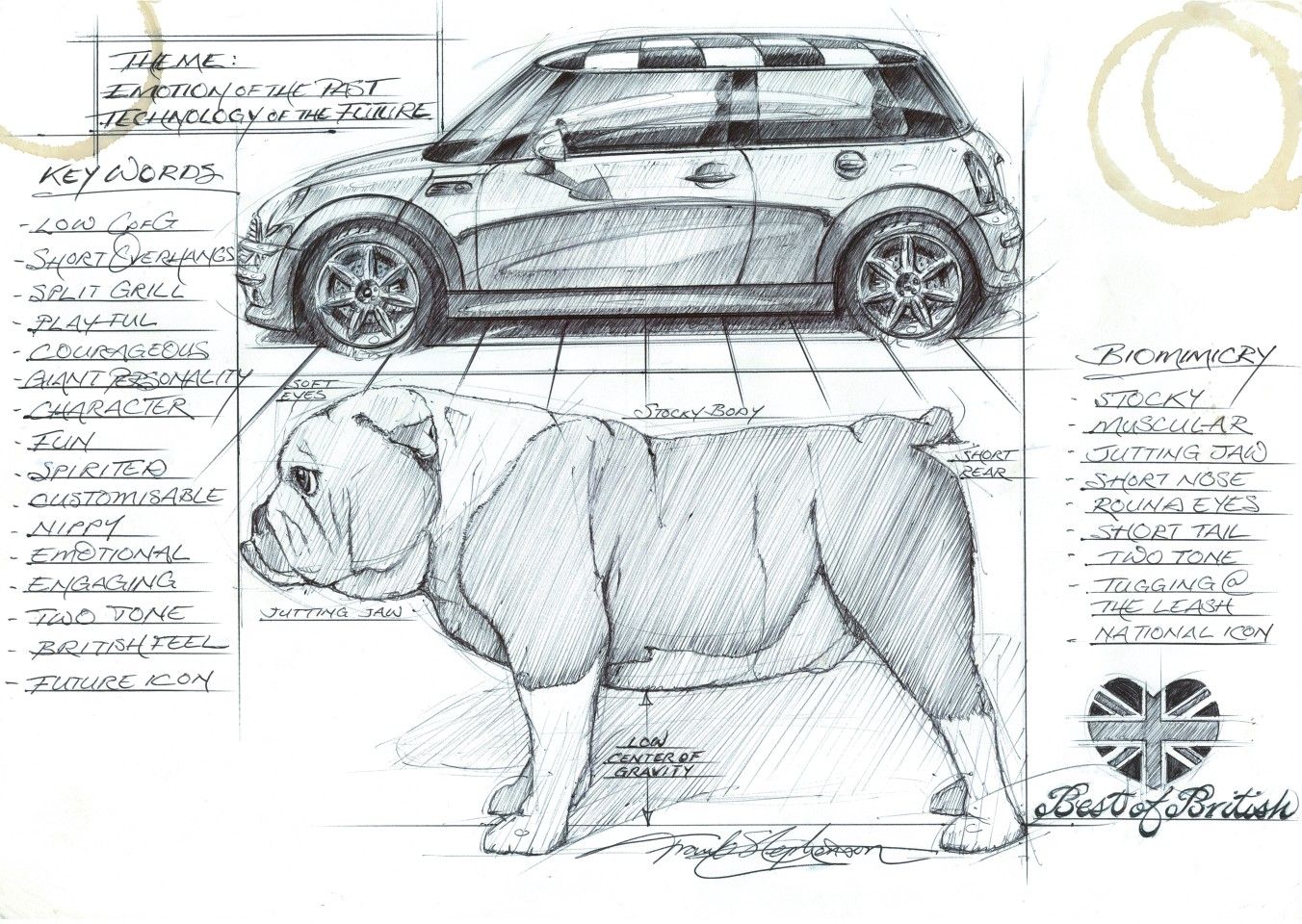



Source: Frank Stephenson Design
Would you say this dynamic was more difficult to manage at Ferrari than at BMW / MINI Cooper or Fiat, or is it all the same challenge?
I think it's all the same. People assume it must be much more exciting to design a supercar than it is to design an econobox or a ‘A to B’ car. In reality it's not any more fun or any less fun. The challenges are the same. If they ask you to write a short story or a novel, you're going to put the same kind of effort into both, because what you want at the end is customer satisfaction and a positive reception.
You really want the reactions to fit too. If it's a supercar, it's got to be an instant desire, because nobody really needs a supercar, but people will spend a lot of good money for something that is instantly desirable to them. On the other end of the market, ‘A to B’ or ‘bread and butter’ cars obviously have to sell on price, and so customers are looking at the best value for a product like that, as well as quality. Emotional purchasing comes into it too. The customer has to feel like the car represents his or her personality. If you have a dry personality, you don't mind driving a dry looking car, but if you're an outgoing type of person, you're going to want an outgoing kind of car. That's just the way people are - they dress the way they do because of it, their homes reflect it and so do their car purchases.

What do you think about the recent trend for super-exclusive limited runs of hypercars or pure statement pieces like Tesla Cybertruck? Is that where you think bleeding edge design should be going or should our focus really be elsewhere?
I find an incredible value to those super exotic designs. People might think that it's stupid that we design cars that have a limited production volume and will never be seen on the street, but that's a very limited way of thinking. We need outrageous designs, much like in fashion, where they use haute couture to explore something beyond what the customer wants or expects. Of course, if your girlfriend is dressed in haute couture every day, people are going to think she's a bit mad or over the top; but it helps us to develop technology at the most extreme end of the market. While the good stuff is usually very expensive to design, that end of the market welcomes it and if it is good design, it trickles down eventually into the more usable segments.
We need that high end stuff that gets you a ‘love it or hate it’ reaction; it's almost an experiment for design taste and engineering technology which you would never attempt to put into a high volume car. I 110% stand behind that upper end of the market, because I view it as more than just an attention grabber. I think of it as a technology and design testbed - so full marks to any of those companies that push the limits with their concept cars.

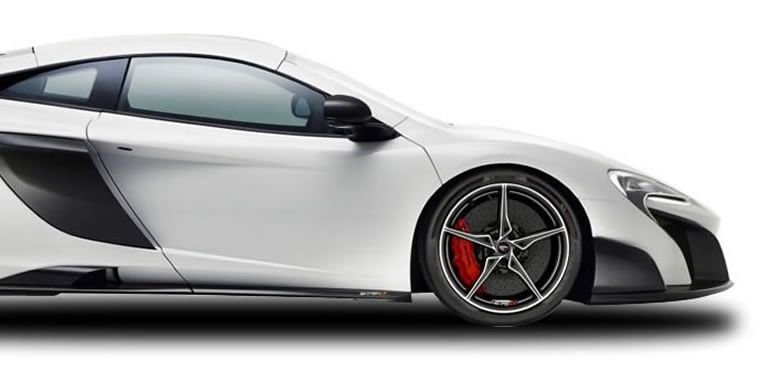
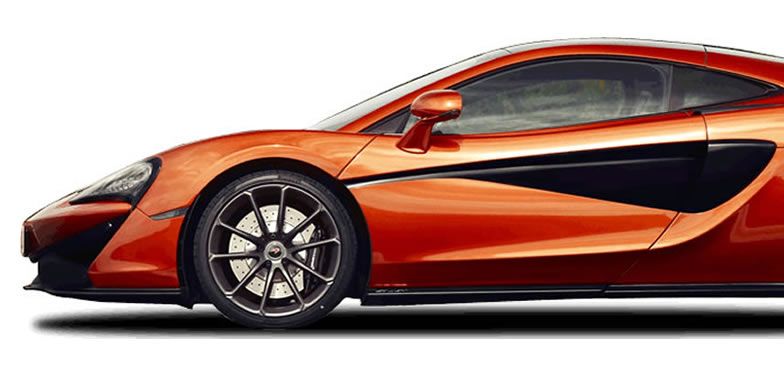

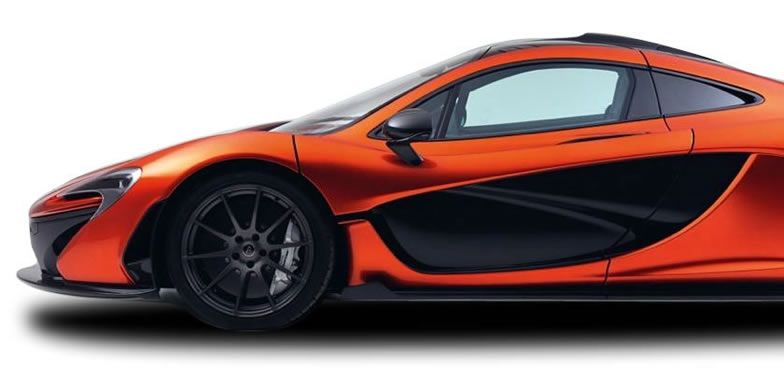
Source: Frank Stephenson Design
You put a video out recently discussing the design of the Tesla Cybertruck and your opinions on that from an aesthetic and technological point of view. Could you tell us your thoughts on it, given most people would consider it quite an extreme design?
There are two ways of looking at that car: technology or design. As technology it's interesting; obviously nobody has ever done something like it in the car market. I mean, tank designers or armoured bunker designers have (!), so you can take a little bit of that influence. But I can only think of violent, or as I called it, dystopian situations where you would need a product like that; situations where you're not worried about damaging the vehicle, and you're safe in your metal cocoon. Perhaps there is a need for that type of vehicle if you are out in the fields, working at some heavy industrial site; but in the world of car design, that vehicle makes zero sense. If there's any number less than zero, I would give it that!
We’re talking about products that people are actually buying and using here. You can say, okay, the Cybertruck has the advantage that it doesn't scratch, doesn't need paint, is sturdy and you can't make a dent in the bodywork. That’s fine, but it’s also like starting out with a negative approach to life. It just turns me off completely. People might say I’m an old fart and I just want to hold onto the past and not think about the future. My point is actually that anything which is a good design will turn me on. In other words, you want to be looking at a car that keeps its design value no matter in which period of time we're looking at it. That could be the Alfa Romeo Tipo 33 Stradale; in terms of people, Sophia Loren is going to look beautiful forever to us. Beethoven's 5th Symphony is going to sound great forever. Whereas the Tesla Cybertruck for me is, I don't know, like the Elephant Man or some kind of strange music that doesn't make any sense at all. It's basically just a moment in time; you will get people who like it for what it is, but on a grand scale, it's not been done in a smart way.
As technology, it’s great. Design wise, people might excuse it and say you're restricted by industrial processes and the use of materials. That's hogwash; you can do anything with any type of material if you find a smart way to do it. You are limiting yourself if you think that's the only way you can bend metal or that kind of stainless steel. It really doesn't have to look that basic.
Is this where you would bring in cues from the natural world to influence the way that you design cars?
It can sound hokey-pokey when I say I want everything to look like it's designed by nature. The only thing I mean by this is that everything in nature is designed to win, to succeed, be the best solution out there. That in itself is my inspiration - not that it has to look like a tree or a rock or whatever. The explanation for how a shape is arrived at implies an intelligent reason for the design to be that way. Nature is not haphazard, and the designs that don't conform to the principles of good natural design just jar.
In biomimicry, which is the science of using nature as a design inspiration, there are certain laws of proportion which just do not change. That's why we typically are wired to see things as being beautiful or not. You can say beauty is subjective or in the eyes of the beholder, but it's very hard to take something that is absolutely gorgeous using those laws of proportion and criticize it as bad design. That's actually just bad taste. Everybody has an opinion, but not everybody has good taste. If you're designing something within the golden laws of proportion, typically it results in a very well balanced, agreeable design. It doesn’t look old fashioned or anything like that. It just feels right.
The main selling point of that sort of design which I think is important is ‘love at first sight’. You look at something, it feels right and it takes you hardly any time at all to get used to it. It might be innovative, and you've never seen it before, but as long as it achieves that instant emotional desirability, then you are winning.
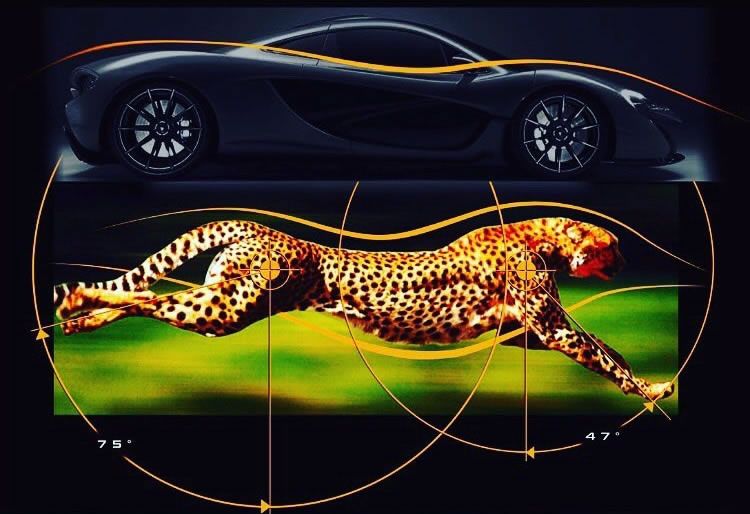
That's a really interesting way of putting it. In recent years you've set up the Frank Stephenson Design Consultancy where you work on much more than just cars - what projects are you currently working on that you could tell us about, and what excites you about them?
People probably wonder why I did it! I certainly would if I was in the car design profession. Being head honcho at McLaren has to be pretty fun, right? I came in at the very grassroots of McLaren Automotive where we had to establish a design language and achieve a level of respect in the super and hypercar segments. However as soon as I did that, I thought hard about whether I was really happy. Having been in the role for a decade meant that I was going to have to repeat another decade of renewing those cars, and once you've done it, you've done it. You always aspire to something higher; you can either challenge yourself to take a project to the next level or you can veer off and do a rethink, which is what I did.
I thought to myself that not a lot of people are going to see these McLarens or own them. I had been in car design for just over three decades, had learned quite a bit and hadn’t really put my foot wrong yet. So I thought - why don't I just get out and start doing stuff that can really make an impact on a broader level, doing design for a wider segment of people and take on projects that can make a huge difference in society? That sounds a bit wishy-washy I guess, but if you're in that position, it makes a lot of sense to give something back.
I set up the consultancy to take on work with four filters: (i) the design project had to be innovative or utilise a new technology; (ii) the project had to be the best in its segment, not necessarily expensive, but aiming high to be the best of the best; (iii) it had to use sustainable materials, which is the big buzzword in today's design world, and (iv) it had to cater for biomimicry or nature as a design inspiration. As long as a project passed those four filters, then it was probably going to be a great thing to work on.
I kept that philosophy and right away it allowed me to work on impactful projects. The first one that came along was new age mobility, specifically e-VTOL flying taxis, on which significant work is happening right now. Within this decade we're going to be seeing taxis that you order up like an Uber that land in 11 square metres of space. You get into the pod, it goes straight up into the sky electrically and then it flies you as the crow flies straight to your destination, landing vertically. These e-VTOL aircraft are going to be the future way to get you to your destination, not necessarily eliminating other transport like trains or cars, but getting you there in a much more efficient way.


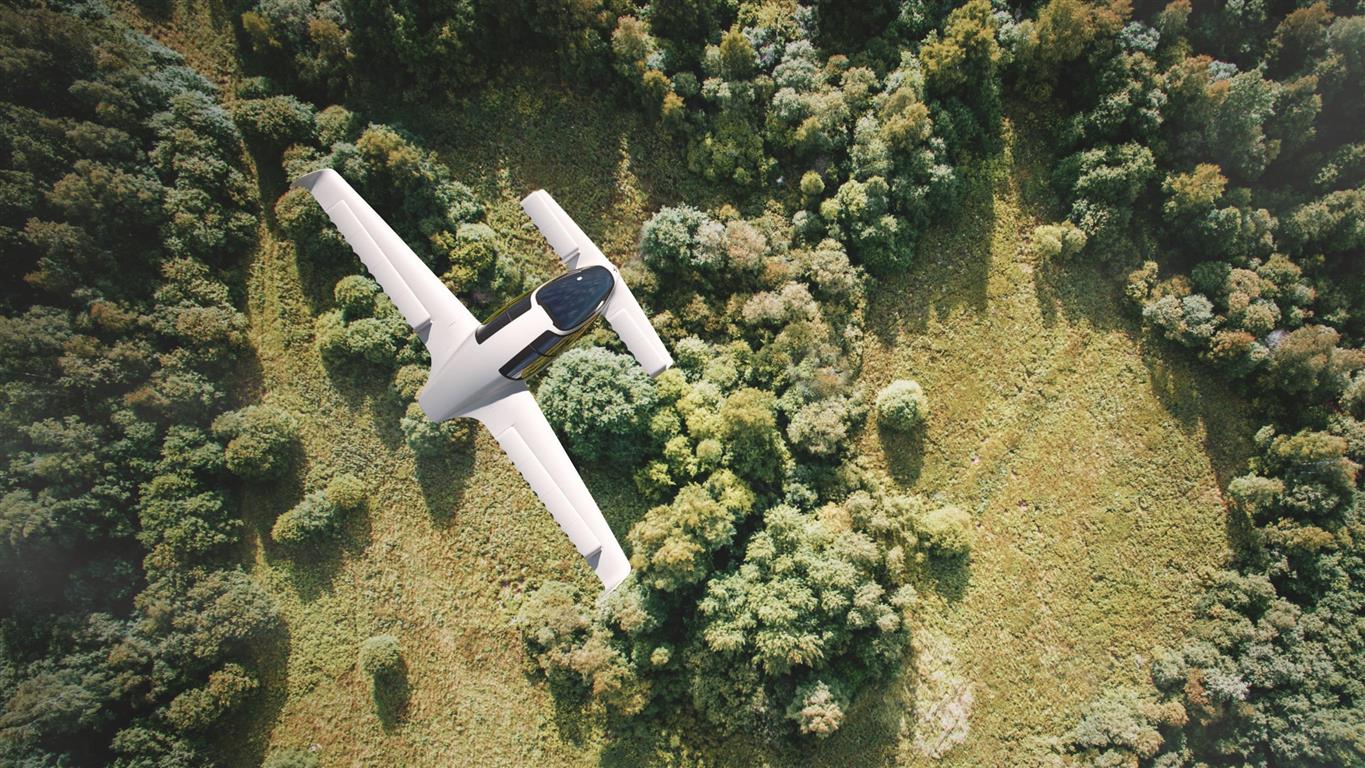
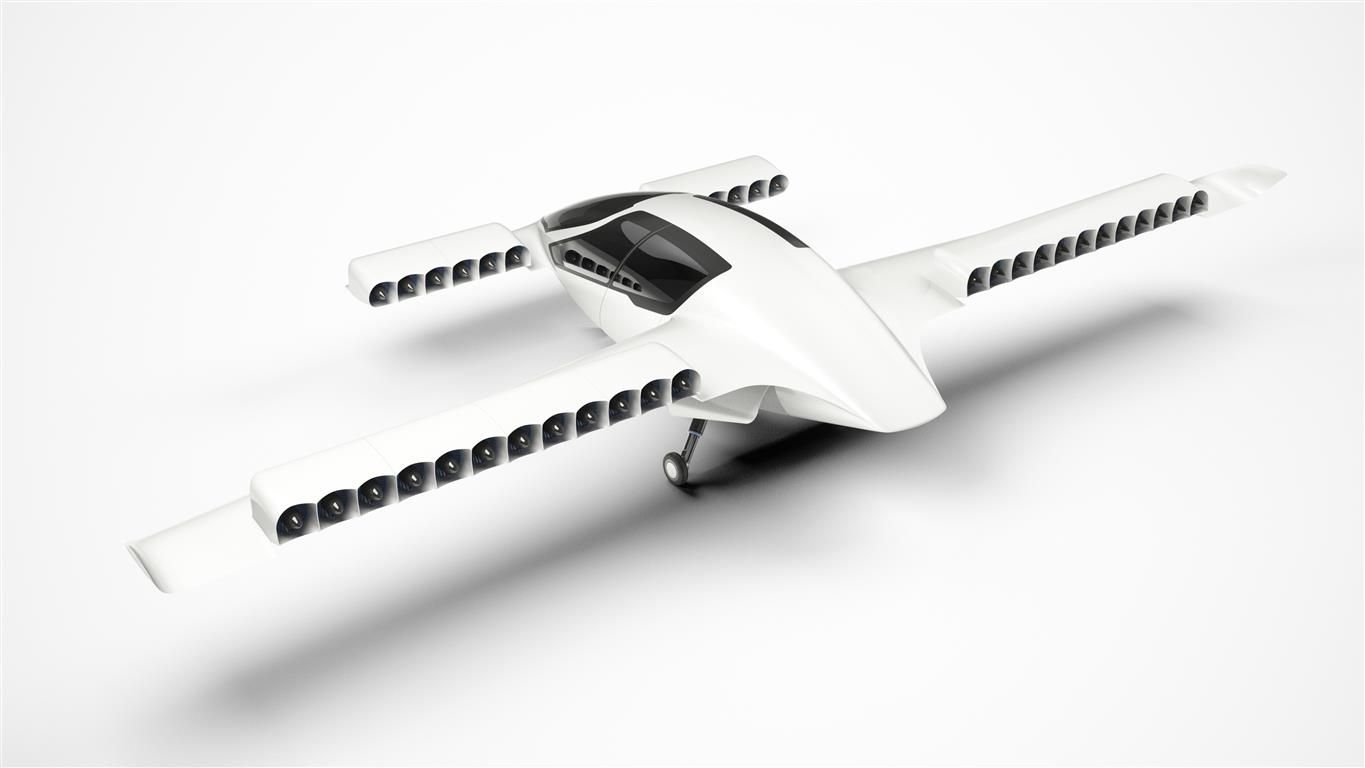
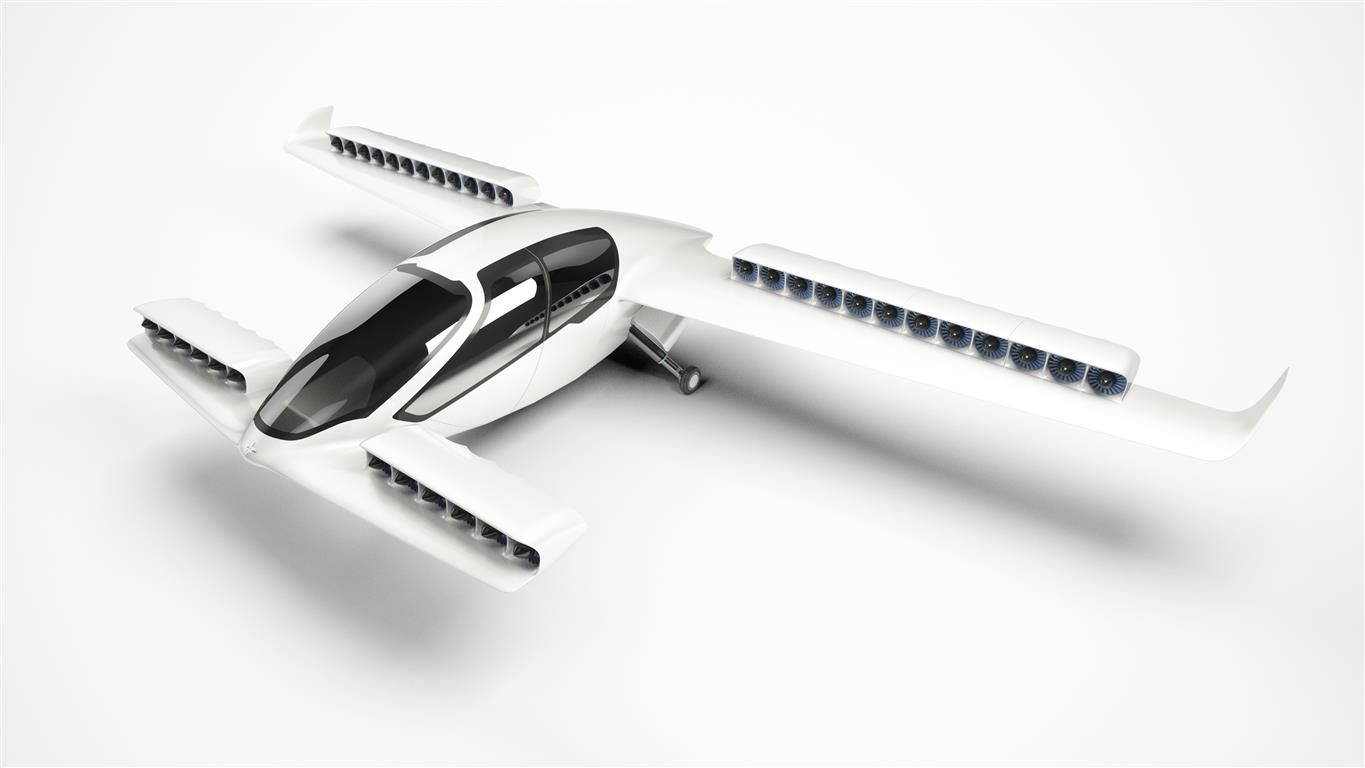
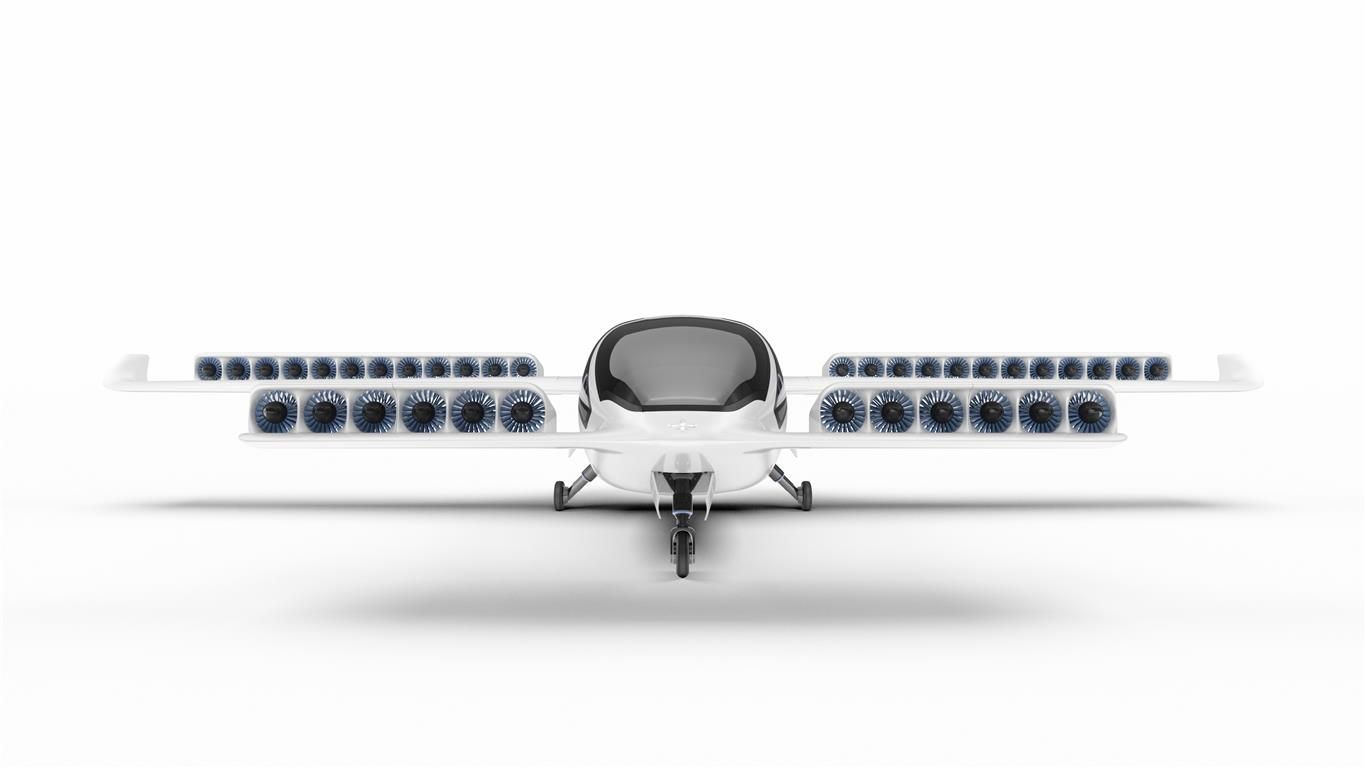
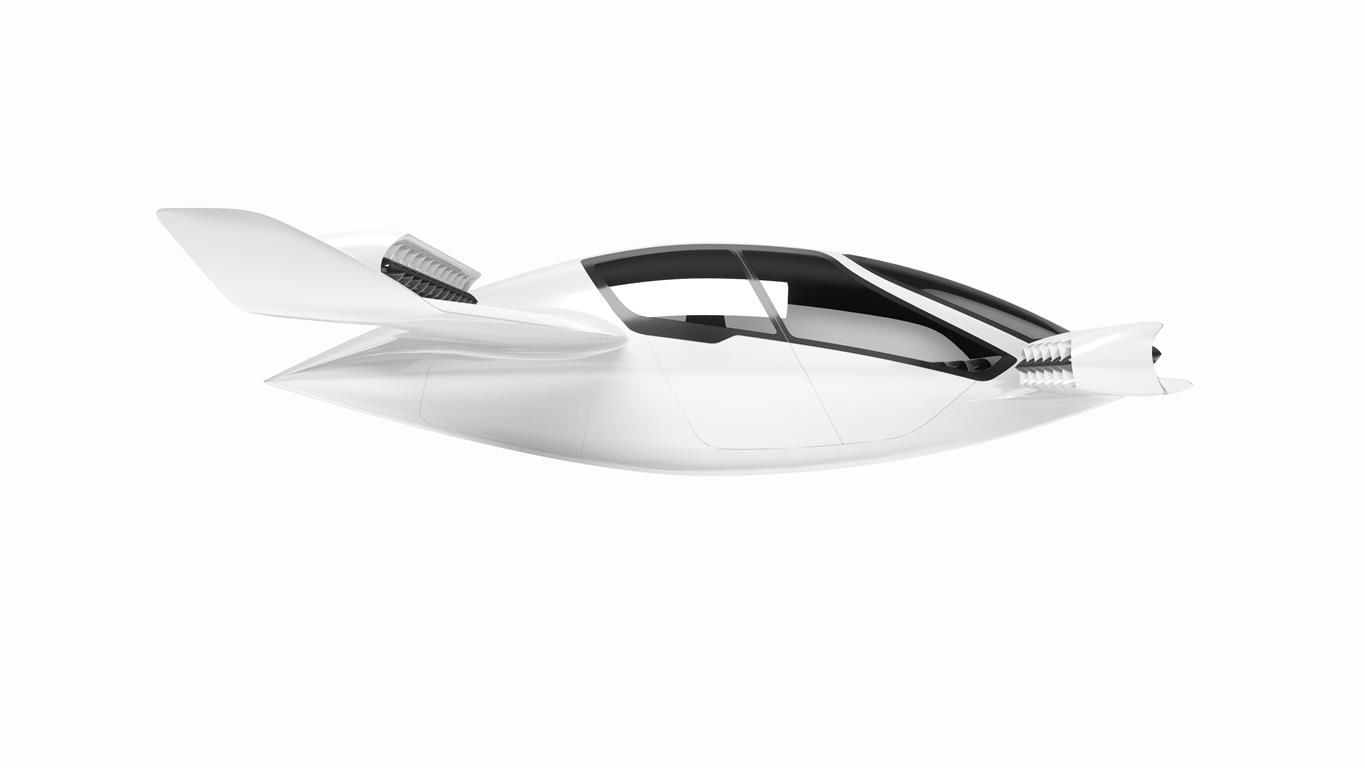
Source: Frank Stephenson Design
The next project was designing the safest infant car seat on the market, which deploys the high end technology used in armoured vehicles to absorb energy on impact so your child is 70% safer in one of these seats than any other competing baby seat on the market. It is incredibly advanced, like no other car seat on the market, but looks cuddly at the same time. I've also been working on watches for space, land and deep sea diving, and as a special project I've started to get involved in the design of the first two cars that will be going to race on the lunar surface. They're going up in October of 2021 on SpaceX, and it’s an incredibly exciting programme. You may wonder why they hired a designer for those vehicles when it's just pure engineering, but at the same time these things have to look advanced, and there's a lot of design knowledge that you can use from high-end hypercars where the focus is on power-to-weight and things like that. It's not so much aerodynamics, because there's not a lot of downforce on the moon, but these things have to be designed correctly.
Design is not art. For me it's what I love about it. It's a combination of art and science; that's the attractive part of it and also introduces the educational side, where we're involving young people in the pre-development program for the lunar rover that's going to go up in 2024. There's a lot of stuff happening at the moment - I could go on and on!
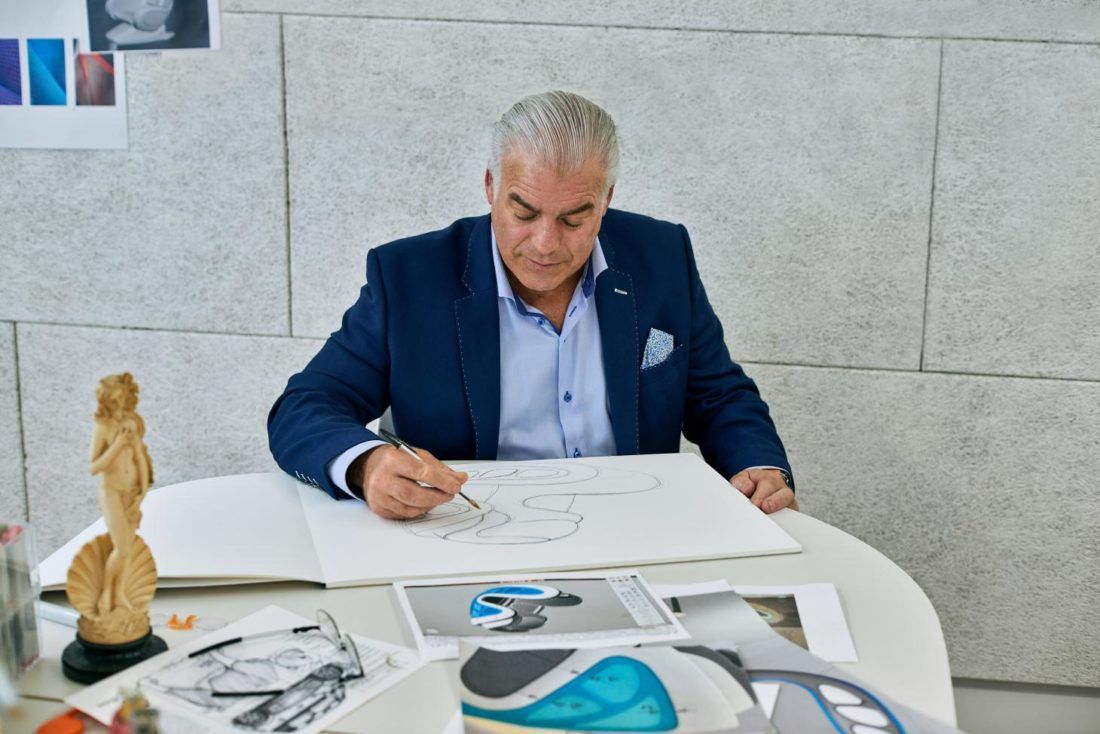
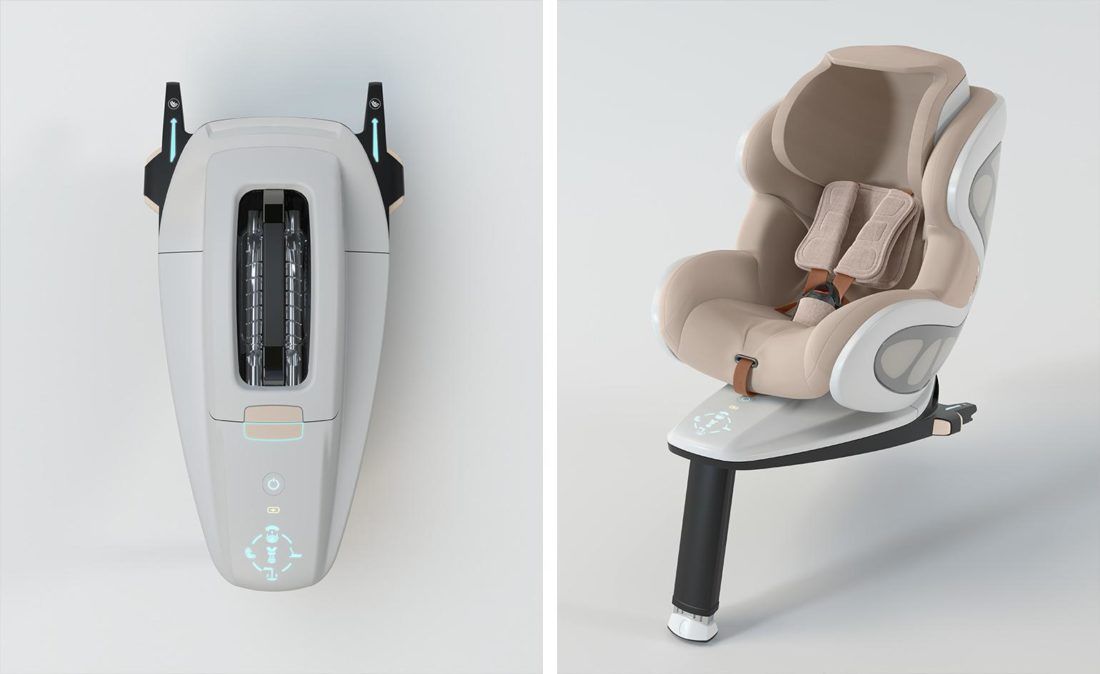

Source: Frank Stephenson Design
That's an incredible breadth of work. I thought we would bring it back to some final questions that car enthusiasts would be curious about. The first being: is there a designer that you hold as your role model, or any people who have particularly inspired the way that you design and/or think about cars?
Absolutely, but he's dead now, and he hasn't been around for a few years. Leonardo da Vinci - this Italian dude!
He is the Renaissance man. I like the range of thought that he applied to every aspect of his inventions. I think genius barely fits the description of the guy, he could do anything and be the ultimate in it. He was almost a doctor from doing so much research into the human body and living organisms, and while looking at everything in a purely scientific way he had a touch for aesthetics that was unrivalled also. You look at his paintings and the way he invented stuff that today makes sense - back then he was probably looked at as a half-crazy guy but good designers are half crazy anyway, we have to be different at least to be able to think like that. He was wired in a really interesting way, so he definitely is somebody I would have loved to have lunch with!

That is a brilliant answer; not one I would have expected but when you think about it, it makes complete sense! My second question is whether there is a particular innovation in car design that you would like to see more of?
Absolutely. Given we're talking about life on Earth, that means that we have to deal with a lot of problems. One of them is accidents and safety, and the other one inefficiency.
As far as safety is concerned, Mercedes is leading the way in terms of being able to look around corners and Tesla is doing the autonomous driving thing. I don't really put a lot of faith in level 5 autonomy yet - we are maybe 50 years from that - but until all cars drive at level 5, you're not going to be safe out there. You will always have a ‘dumb’ car crashing into a ‘smart’ car, and unless the level 5 car can repel the dumb car, it's not going to be avoidable. So we need innovation here, and progress will happen in the skies much sooner than on the roads, I think.
On the efficiency side, a lot of people probably won't agree with me, but electric powertrains and propulsion (which are so popular now) are not as efficient as people think. Typically it depends on how you’re going to use your electric car, how zippy you want it to be, but you're going to be driving anywhere between 20,000 to 40,000 miles before you balance out the carbon equation compared to an internal combustion engine. You're not getting the benefit right away, and not offsetting the carbon usage with an electric car as soon as you buy it. It takes a lot of carbon to get that car on the road, unfortunately.
The electric propulsion method for me is really a stopgap. Until we get cars on the road that actually have a zero carbon footprint, electric cars are not going to advance society. One solution that I think we should be looking at in the car industry is biodegradable and environmentally sustainable fuels, which will allow you to still run internal combustion engines. That kind of innovation allows you to still have the emotion that an internal combustion engine gives you. Of course there are a lot of people that just want to get from here to there and don’t care about the vibrations and sounds of a Ferrari... at the same time, if you can produce a car that runs on very clean biofuels, that is where we should be going. The other option is hydrogen, because the waste product is just H2O, and that for me is a great solution. It’s already being used in certain trucks and goods vehicles.
The other point is that we have to make sure that cars are as efficient as possible when they're travelling. If they start having to penetrate the wind, then the handling and the aesthetics of the car are going to come into question. A car at low speed can look generally however you want it. A car travelling at higher speed with greater efficiency and using new technologies can’t have performance items tacked onto it like some kind of boy racer. The way forward is what we call active aerodynamics. I think one of the first cars to do that might be the McLaren Speedtail, where the body of the car transforms the faster you go, with the rear ailerons deforming at high speed.
That's the first easy step, but I'm really talking about body panels that actively shape themselves according to speed. There are a lot of animals in nature that do that. A lot of them change their shape to be more efficient at certain speeds or to brake or turn. Birds of prey don't have spoilers taped onto them or anything like that - it's body morphing. If we can get cars to become actively aerodynamic, responding to certain conditions in a corner or during acceleration with downforce, that would be a great step forward. We would be looking at cars that actually look like they're alive, rather than static.
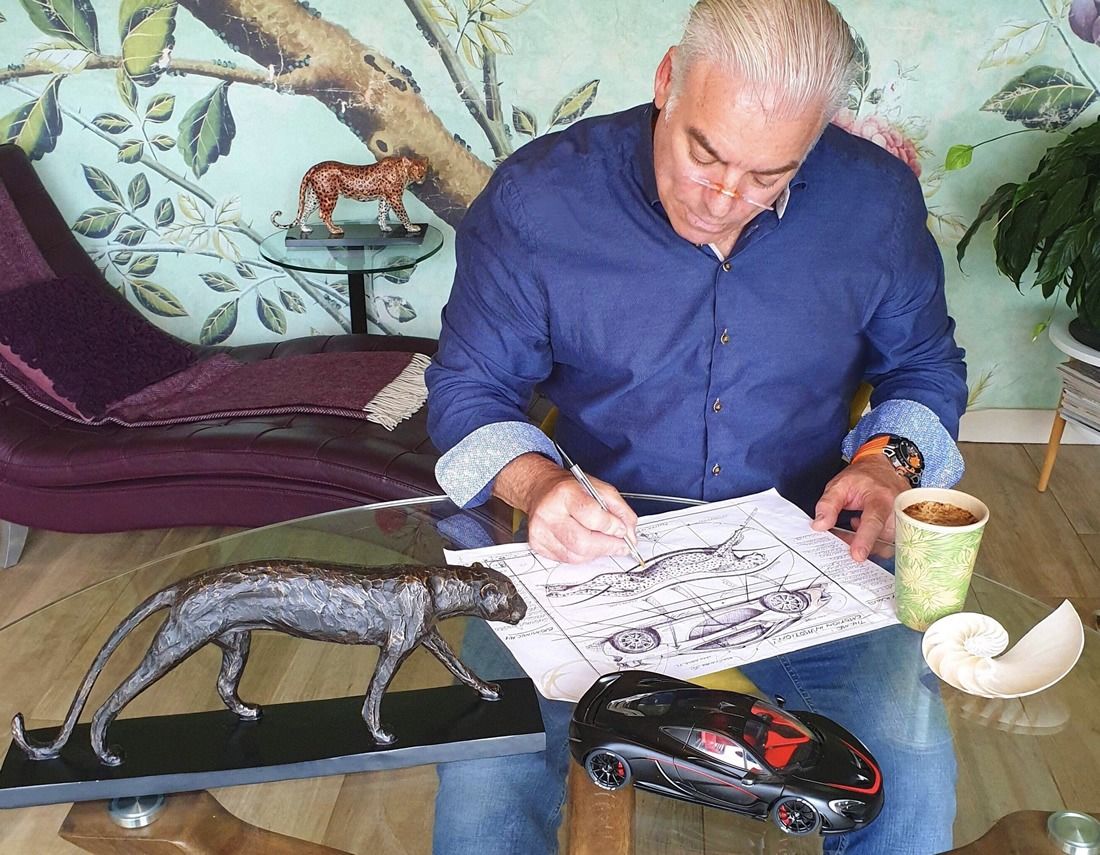
That's an amazing vision of the future. The final question I wanted to ask is whether there is a car, historic or modern, you wish you had designed or worked on?
There are so many cars out there that get me excited. I would have loved to work on all of them. But if I have to choose one, it would probably be the Mk I Jaguar E-Type. That car for me was amazing because it was designed by an aerodynamicist, Malcolm Sayer, and so he used very pure geometric design to create a shape that, still to this day, makes the hair stand up on my arms and gives me goosebumps.
I did a redesign of it on one of my YouTube videos where I put myself into that place in time and thought about what I would have done (which is being very arrogant), but at the same time, if there had been a second proposal for that car, I explored how I would have applied the design methods they had back then. It's very easy to make a car today that looks much more futuristic than the E-Type, but if you try to restrict yourself to what they could have done back in ‘61, the redesign doesn't change it very much, just tweaks here and there. The car is just fabulous; I would have loved to have been involved in that first E-Type project.
What a fantastic note to end on. Frank, I think that's all we've got time for today, so thank you for a fascinating interview and a real insight into your life and work. It's been great having you along.
Thank you very much.
You can find out more about Frank Stephenson on his company's website at https://www.frankstephenson.com/ or on his YouTube channel here.

